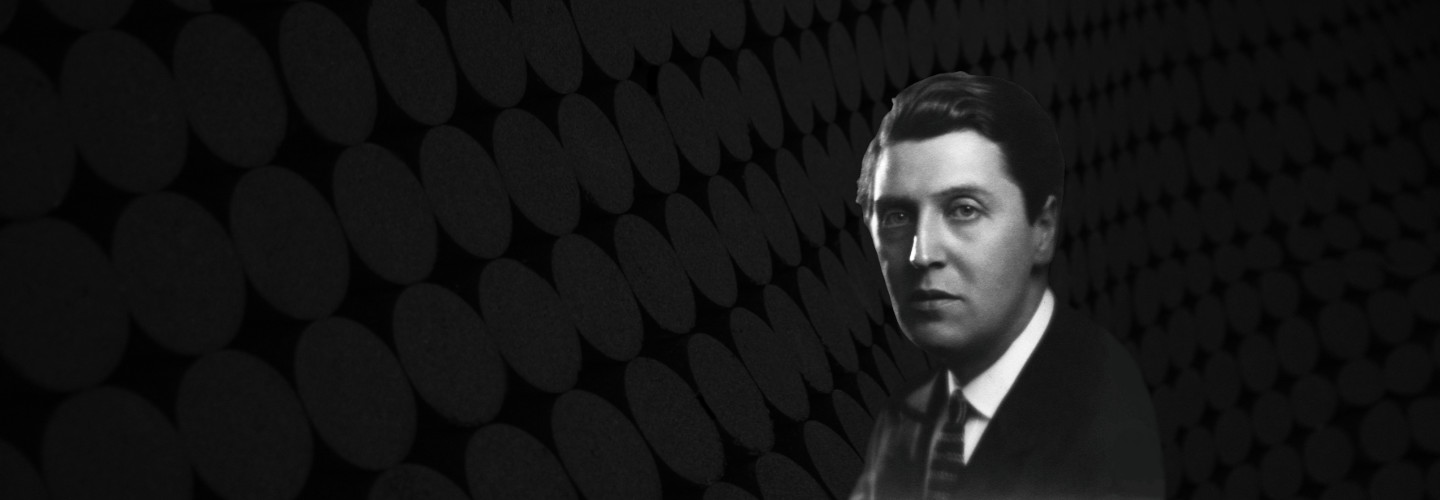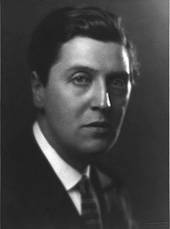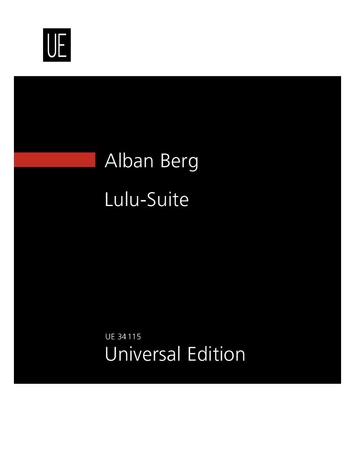

Alban Berg
Lulu-Suite
Short instrumentation: 3 3 4 3 - 4 3 3 1 - timp, perc, vib(ad lib.), hp, pno, alto sax(Eb), str
Duration: 35'
Textvorlage: Frank Wedekind
Libretto von: Alban Berg
Dedication: Arnold Schönberg zum 60. Geburtstag
Solos:
coloratura soprano
Instrumentation details:
1st flute (+picc)
2nd flute
3rd flute
1st oboe
2nd oboe
3rd oboe (+c.a)
alto saxophone in Eb
1st clarinet in Bb
2nd clarinet in Bb (+cl(Eb))
3rd clarinet in Bb (+cl(Eb))
bass clarinet
1st bassoon
2nd bassoon
contrabassoon (+3rdbsn)
1st horn in F
2nd horn in F
3rd horn in F
4th horn in F
1st trumpet in F
2nd trumpet in F
3rd trumpet in F
1st trombone
2nd trombone
3rd trombone
contrabass tuba
timpani
percussion
vibraphone
piano
harp
violin I
violin II
viola
violoncello
double bass
Berg - Lulu-Suite for coloratura soprano and orchestra
Printed/Digital
Translation, reprints and more

Alban Berg
Berg: Lulu-SuiteOrchestration: für Koloratursopran und Orchester
Type: Dirigierpartitur (Sonderanfertigung)
Language: Deutsch
Print-On-Demand

Orchestration: for coloratura soprano and orchestra
Type: Studienpartitur
Language: Deutsch
Sample pages
Audio preview
Work introduction
The term “symphony” might sound somewhat peculiar here, since even the score calls it “Symphonic pieces from the opera Lulu.” Nevertheless, that appellation seems the only correct one to me, both in formal and objective terms. That is, whereas Berg musically-architectonically shaped Büchner’s loose series of scenes in Wozzeck largely by giving each scene its own, idiosyncratic musical form, his procedure when composing Lulu was to assign a specific form to each of the personalities in the opera which permeate the entire work, only resulting in the overall musical characteristic of the gestalts in their subsumption. […]
Since the music of Lulu is completely integrative in terms of its inner structure, it was impossible to extract individual sections in the manner of the Wozzeck fragments. Nevertheless, in order to give the anxiously waiting music world a sample of his new creation as quickly as possible, Berg chose to subsume some of the symphonic developments in the opera into a multi-movement construct. […] the large introductory rondo, the ostinato acting as a scherzo, the coloratura soprano’s song, the peculiar set of variations (where the theme is not revealed until the end) and the adagio finale constitute a veritable symphony in their fascinating overall construction, and are grasped that way as well. When listening, one forgets entirely that the individual movements are interludes and sections from an opera, perceiving Berg’s sounds as pure, absolute music which is uninterruptedly gripping in its artistic beauty, dispensing with any interpretation derived from the words.
(Willi Reich, in Musikblätter des Anbruch, 1934)
